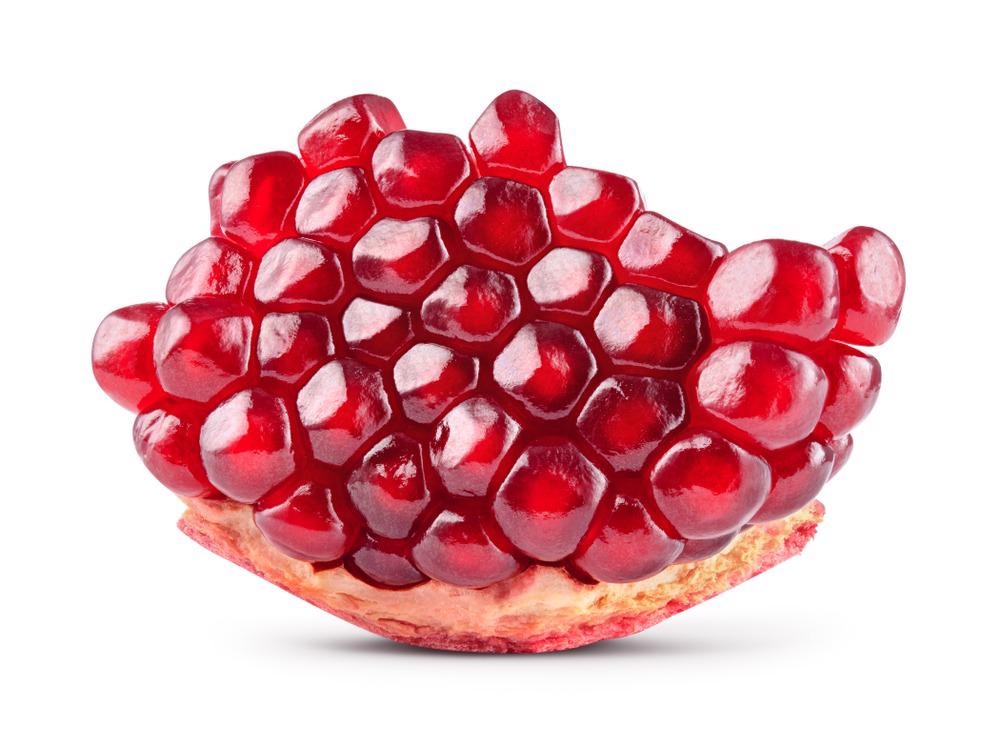Writing in the journal ACS Applied Energy Materials, a team of researchers has investigated the development of anode materials that are inspired by the structure of pomegranate. The study has important implications for the development of sodium-ion batteries, a class of next-generation green energy storage devices.

Study: Pomegranate-Inspired Nitrogen-Doped Carbon-Coated Bimetallic Sulfides as a High-Performance Anode of Sodium-Ion Batteries and Their Structural Evolution Analysis. Image Credit: Tim UR/Shutterstock.com
Sodium-ion Batteries
Due to the evidence for anthropogenic climate change and the effect burning fossil fuels has on the earth’s fragile ecosystems, there is a growing need for green energy storage solutions which reduce greenhouse gas emissions.
Lithium-ion batteries have been a widely proposed solution to this challenge, with commercial applications increasing since the early 1990s. Possessing long cycle lives and high energy density, they have been the focus of much research and development. However, despite their superior electrochemical performance, the widespread application of these devices for energy storage purposes faces drawbacks in terms of resource scarcity, with supply chains unable to meet the huge global growth in demand.
Due to the urgent need for green energy storage solutions and the resource and supply bottlenecks of lithium-ion batteries, sodium-ion batteries have been proposed in recent years as a solution. Sodium is an abundant resource, and sodium-ion batteries possess similar electrochemical behaviors to their lithium-ion counterparts.
However, in terms of lower discharge voltage and higher ionic radius compared with lithium-ion batteries, there are challenges with these devices. Additionally, graphite, which is commonly employed as an anode material, does not suitably accommodate sodium ions due to high dissolvent energy and the large radius of ions. Designing anode materials for sodium-ion batteries which possess superior reversibility, structural stability, and capacity is crucial.
Designing Improved Materials for Sodium-ion Battery Anodes
In recent years, there have been several studies that have investigated the development of improved anode materials for sodium-ion batteries. Three terms exist for these materials based on their reaction mechanisms: intercalation-based materials, conversion-based materials, and alloy-based materials.
Intercalation-based materials include soft or hard carbon and titanium-based compounds such as titanium dioxide. Conversion-based materials include transition metal sulfides, oxides, selenides, nitrides, and phosphides. Alloy-based materials include alloys of germanium, tin, and antimony.
Amongst these proposed anodic materials, metal transition sulfides have received research focus due to their low cost, simple synthesis, and high theoretical capacity. However, their large volume variations, low conductivity, and unstable solid electrolyte interfaces present challenges for researchers. These issues can lead to low Coulombic efficiency, poor cycling stability, and high polarization.
More from AZoM: Introducing a Commercially Stable Lithium-Sulfur Battery
Several strategies have been proposed to improve these materials and make them more suitable as anodes in sodium-ion batteries. Carbon coating, developing mixes of these materials, minimizing the granularity of nanoparticles, and heteroatom doping have all been explored in recent studies. Recently, combining carbon-based materials with nanostructure engineering has emerged as an attractive solution.
The Study
The study published in ACS Applied Energy Materials has investigated the development of bimetallic sulfide composites with specially designed architectures inspired by the structure of pomegranate. Pomegranate is composed of a hard outer pericarp filled with inner seeds and sarcotesta (a fleshy seed coat). The structure of the proposed material is composed of multiple nitrogen-doped carbon-coated nanoparticles wrapped in porous carbon spheres.
The proposed structure buffers volume changes during multiple cycles effectively and promotes the overall structural integrity and electronic conductivity of the novel material. A simple hydrothermal and annealing process was used to prepare the materials. To test the material’s effectiveness, a novel fuel cell was constructed using Na3V2(PO4)2F3 as a cathode. The fuel cell displayed good cycle stabilities and high capacities.
The researchers have noted that there is a capacity loss during cycles, but that this is probably related to the formation of solid electrolyte interfaces at both the anode and the cathode, gradually increased inner polarization, and electrolyte decomposition.
XRD, in-situ XRD, and Raman spectroscopy were employed by the researchers to measure the phase information of the proposed materials. Morphologies were analyzed using scanning electron microscopy and transmission electron microscopy. Enhanced properties were observed which make these pomegranate-inspired anodes suitable for further investigation for use in solid sodium-ion batteries.
Based on their analysis, the authors have stated the proposed fuel cells benefit from volume expansion suppression and good electronic conductivity, meaning that they have good cycling stability, high working potential, and a high rate of performance. Moreover, the simple two-step synthesis process of the novel anode material provides significant advantages for researchers.
This opens the door to commercializing sodium-ion batteries for use as green energy storage devices. Additionally, even though there is space for improvement, structural evolution analysis of other rechargeable battery devices can be facilitated.
Further Reading
Peng, Q et al. (2022) Pomegranate-Inspired Nitrogen-Doped Carbon-Coated Bimetallic Sulfides as a High-Performance Anode of Sodium-Ion Batteries and Their Structural Evolution Analysis [online] ACS Appl. Energy Mater. 2022 | pubs.acs.org. Available at: https://pubs.acs.org/doi/10.1021/acsaem.1c03810
Disclaimer: The views expressed here are those of the author expressed in their private capacity and do not necessarily represent the views of AZoM.com Limited T/A AZoNetwork the owner and operator of this website. This disclaimer forms part of the Terms and conditions of use of this website.